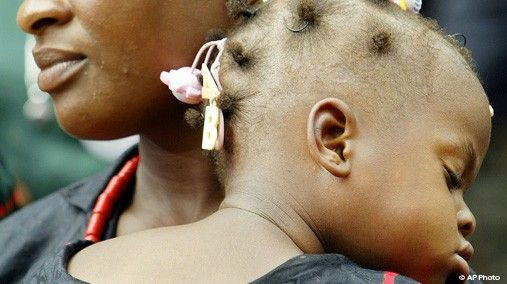AIDS Leaves 1.8M Orphans In Nigeria, Health Worker Says

As much of the world emerges from deep poverty, Nigeria remains troubled by not only extreme poverty — defined by the United Nations as living off less than $1.25 per day — but an AIDS pandemic that has orphaned 1.8 million children since 1986.
The sub-Saharan African nation has an estimated 4.4 percent HIV infection rate, with 3.9 million people presently living with the virus. Hajia Salimot Lawal, the Kwara Ministry of Health Coordinator for HIV/AIDS, spoke Thursday at a workshop for local government health workers there. Despite continued efforts to stop the spread of HIV, "Nigeria remains among the top five countries in the world in terms of HIV and AIDS burden," she said, adding that much of challenge lies with encouraging people to get tested and to know their HIV status.
Lawal said mother-to-child transmission of the disease accounted for 3 to 10 percent of infections in the country. However, "with the introduction of core [mother-to-child transmission] interventions in the developed countries, the rate has fallen to as low as two per cent." For HIV positive women, taking antiretroviral drugs during pregnancy and using alternatives to breastfeeding drastrically reduces the risk of transmitting HIV to infants.
To make progress in stemming the HIV infection rate in Nigeria, government health workers must focus on testing pregnant women receiving antenatal care. "In all settings, HIV testing and counseling should be offered to all pregnant women seeking these services and service providers should also mobilize them to go for testing."
With counseling, pregnant women without HIV might be empowered to engage in safer sex practices, using condoms to protect not only themselves but their unborn child. Part of the challenge also lies with over-worked and stressed government health workers, Lawal told the sparsely attended conference. Bosede Alabi, one of the health workers there, told a reporter she planned to encourage more people to get tested for HIV and AIDS.
As the large African country also moves toward a more representative form of government, funding for health care remains limited with government workers overstretched across all 16 local regions. Aside from a high rate of mother-to-child transmission, disease risk factors include a high rate of prostitution and trafficking of women and girls, in addition to risky sex behaviors in general.
Published by Medicaldaily.com



























